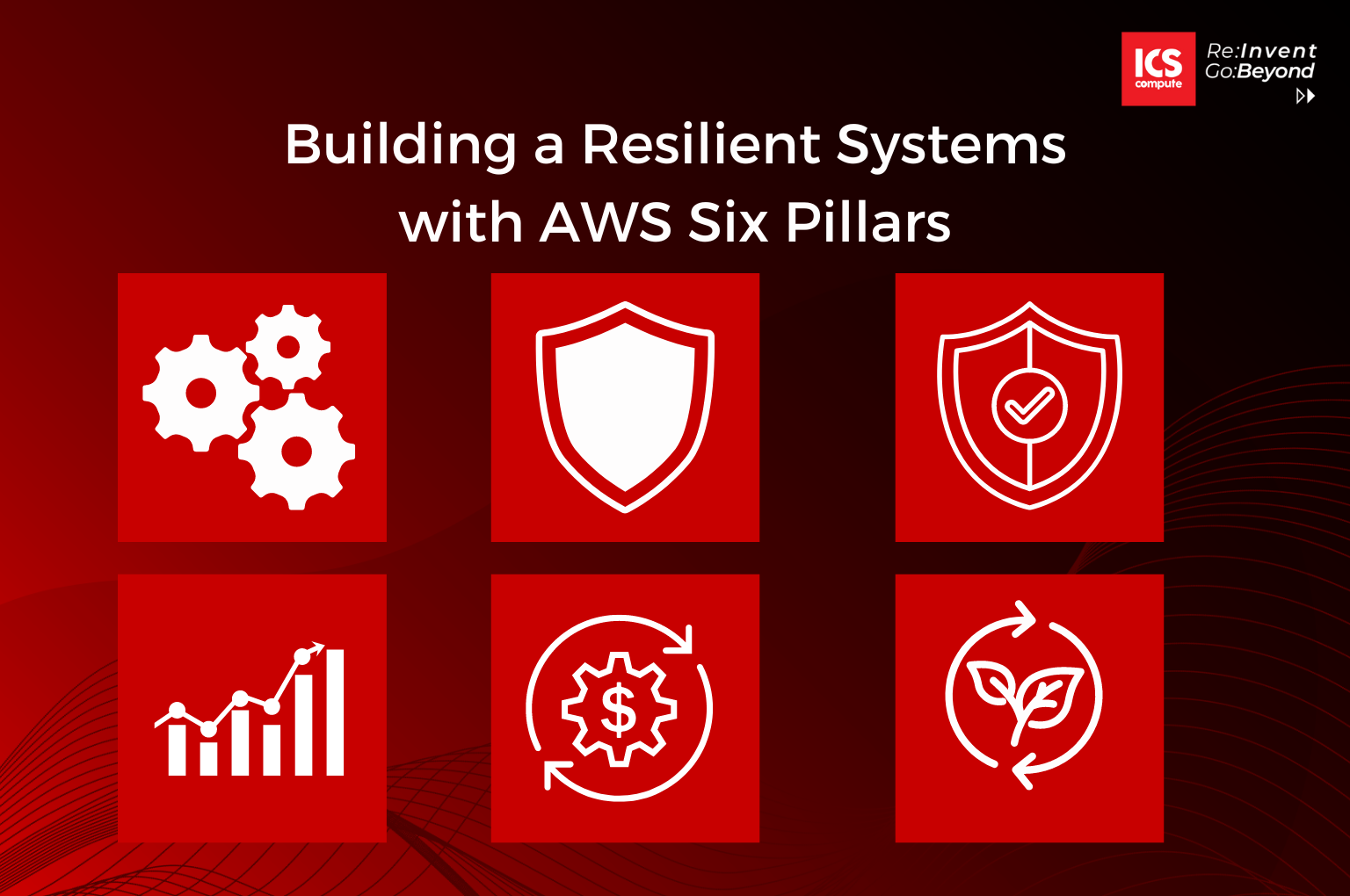Building Resilient Systems with AWS: Aligning with the Well-Architected Framework and Six Pillars of AWS

In a world where digital systems increasingly support critical business operations, the resilience of IT infrastructure is paramount. A resilient system is capable of absorbing shocks, recovering from failures, and even thriving amid disruptions. In this blog post, we delve into the world of resilience in Amazon Web Services (AWS), connecting it with AWS’s Well-Architected Framework and the Six Pillars of AWS.
AWS and the Importance of Resilience
AWS provides a wide range of tools and services designed to enhance resilience, including redundant storage options, automatic scaling, load balancing, and comprehensive monitoring and alerting systems. Moreover, AWS’s global network of data centers allows for geographic distribution of applications, mitigating the risk of a localized event causing system failure.
The AWS Well-Architected Framework and Resilience
The AWS Well-Architected Framework is a guide developed by AWS to help users build secure, high-performing, resilient, and efficient infrastructure for their applications and workloads. It comprises five pillars: Operational Excellence, Security, Reliability, Performance Efficiency, and Cost Optimization.
Two of these pillars, Operational Excellence and Reliability, directly contribute to system resilience:
- Operational Excellence: This involves running and monitoring systems to deliver business value and continually improving processes and procedures. Key practices include managing and automating changes, responding to events, and defining standards to manage daily operations effectively.
- Reliability: This pillar focuses on the ability of a system to recover from infrastructure or service disruptions and dynamically acquire computing resources to meet demand.
By following the best practices laid out in these pillars, you can design and operate resilient systems on AWS.
The Six Pillars of AWS
To further strengthen the resilience of systems on AWS, the Six Pillars of AWS was introduced. While the Well-Architected Framework focuses on architecture design, the Six Pillars goes beyond, providing a holistic approach to business success. These pillars include: Frameworks, Workforce, Partner Ecosystem, Security, Financial Management, and Innovation.
When it comes to resilience, all six pillars play a crucial role:
- Frameworks: AWS provides various architectural frameworks and blueprints that aid in building resilient systems. The Well-Architected Framework mentioned earlier is one such example.
- Workforce: AWS offers comprehensive training and certification programs, enabling your workforce to design, build and operate resilient AWS systems.
- Partner Ecosystem: AWS has a vast global network of partners that can provide specialized expertise in building and managing resilient applications on AWS.
- Security: With AWS, you get inbuilt security features and compliance capabilities, contributing to a secure and thus more resilient infrastructure.
- Financial Management: AWS’s pay-as-you-go model, coupled with budgeting and cost management tools, ensures that you can maintain financial resilience while scaling your systems.
- Innovation: AWS continually innovates and introduces new services and features that enhance system resilience. Services such as AWS Lambda (for serverless computing) and AWS Fargate (for serverless containers) allow you to build highly resilient applications by abstracting away infrastructure management.
In conclusion, AWS offers a robust toolkit for building resilient systems, and by aligning with the Well-Architected Framework and the Six Pillars, businesses can further enhance the reliability and durability of their applications. Whether your organization is a startup or a large enterprise, leveraging these principles can help ensure your systems stay functional and adaptive, no matter what challenges lie ahead.


